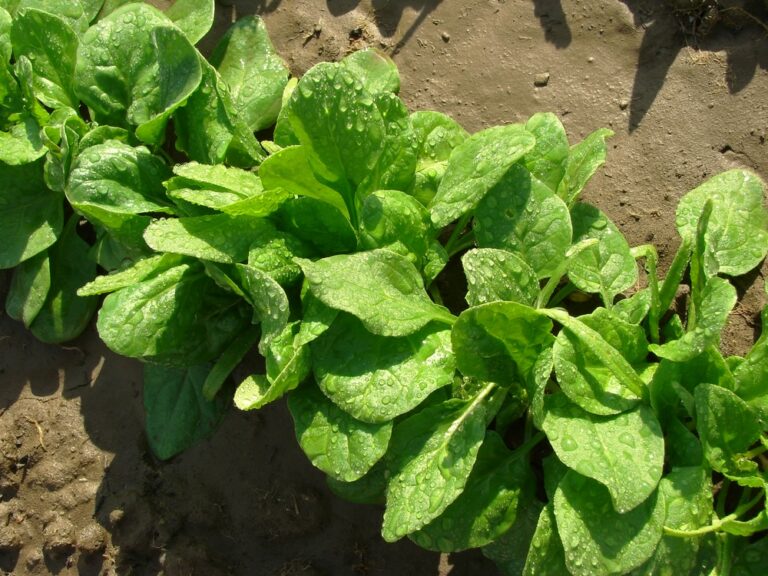Spinach (Spinacia oleracea), a versatile and nutritious leafy green, has long been celebrated for its remarkable health benefits and culinary versatility. This vibrant plant traces its roots back to ancient Persia (modern-day Iran) before spreading across Europe and Asia. With its distinctive dark green leaves and succulent texture, spinach has become a staple ingredient in a wide range of dishes, from salads and smoothies to stir-fries and soups. Fortunately, cultivating spinach in your own garden can be a rewarding endeavor, as it generally thrives in cooler climates and is considered moderately easy to grow, making it an excellent choice for both experienced and novice gardeners.
Common Spinach varieties:
- Savoy Spinach
- Bloomsdale Spinach
- Regiment Spinach
- Lavewa Spinach
- Hammerhead Spinach
Care
As mentioned before, Spinach is not difficult to cultivate or care for, but you need to keep these requirements in mind:
- Light: Plant spinach in a location that receives full sun to partial shade, ensuring it gets 3-4 hours of direct sun daily while avoiding intense afternoon sunlight.
- Soil: Opt for loamy, well-draining soil with organic richness and a neutral pH to provide an ideal growing environment for spinach.
- Water: Keep the soil consistently moist but not waterlogged by watering spinach regularly, especially during warm weather. Aim for 1-1.5 inches of water per week, dividing it into multiple sessions. Mulching helps retain soil moisture.
- Temperature: Spinach thrives in temperatures between 50-60 degrees Fahrenheit and can tolerate light frosts but not heavy freezes.
Propagation
We usually grow Spinach from seeds, but instead of relying on seeds, you can also harvest mature plants and carefully pull out a rooted stem. Plant the stem in a good potting mix, ensuring consistent moisture. Once you feel resistance when gently pulling the stem, it indicates the development of a strong root system. This method bypasses seed germination time, resulting in a faster harvest.
Common Pests
Frequently Asked Questions
Spinach, a hardy and low-maintenance crop, thrives in early spring and certain fall climates, requiring nitrogen-rich soil and temperatures ranging from 50 to 60 degrees Fahrenheit.
Does spinach need sun to grow?
Yes, spinach requires sunlight to grow. While it can tolerate partial shade, it generally needs at least three to four hours of direct sun exposure each day to thrive.
How many times will spinach regrow?
After harvesting spinach leaves, the plant does not regrow in the same way that certain perennial plants do. However, spinach plants can produce multiple harvests during their growing season. By selectively picking the outer leaves while allowing the inner ones to continue growing, you can extend the harvest period and maximize the yield from each plant.
How much water do spinach need?
Spinach plants require regular watering to keep the soil consistently moist but not waterlogged. In general, spinach needs around 1 to 1 1/2 inches of water per week.
How tall does spinach get?
Spinach is not a giant plant, it’s mature size is 6–12 in. tall and wide.

